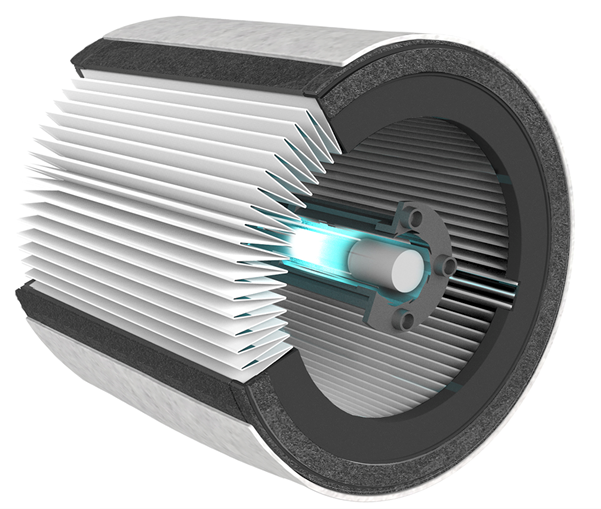
With air purifiers becoming a must-have for schools, workplaces, and the home, relevant government and health bodies, such as Safe Work Australia and the World Health Organisation are recommending air purifiers fitted with high-efficiency particulate air aka HEPA filters, to lower the concentration of airborne contaminants (including viruses) in the air.
So what is a HEPA filter and what does it actually do?

HEPA filters capture air pollutants such as dust, pollen, mould and bacteria.
Constructed from a mixture of carefully interlaced glass fibres, HEPA filters pick up particles through direct impacting, interception, diffusion, or sieving, depending on the size and way the fibres collide with the filter.
A HEPA filter can theoretically remove at least 99.97% of these pollutants with a size of 0.3 microns (μm) circling through the air, keeping the air you breathe cleaner.
With the goal of protecting us from certain pollutants, HEPA filters are incorporated in items such as air purifiers, face masks, aeroplanes, cars and vacuum cleaners to capture potentially harmful contaminants and ultimately protect us.
HEPA filters are the most commonly used form of filtration in an air purifier, but when deciding which to buy, consider additional purification systems as well. When a HEPA filter is paired with additional filtration such as disposable prefilters, the quality can be further improved and extend the life of the filter to at least 25% as stated by the Centers for Disease Control and Prevention (CDC).
In summary, it’s clear that air quality matters. If this is compromised, we are subjected to a higher chance of exposure to airborne diseases which can cause health implications. As we revert to the new normal, it is no surprise that the places we frequent such as schools and workplaces, are prioritising HEPA air purifiers to protect students and employees.
Note: TruSens Air Purifiers will eliminate 99.99% of airborne coronavirus (SARS-Cov-2) in your indoor space.*
*Results from independent third-party testing using aerosolized airborne concentration of human coronavirus 229E over a two-hour period in a sealed 30m3 test chamber. HCoV-229E is a well-established surrogate for SARS-Cov-2 (the virus that causes COVID-19).